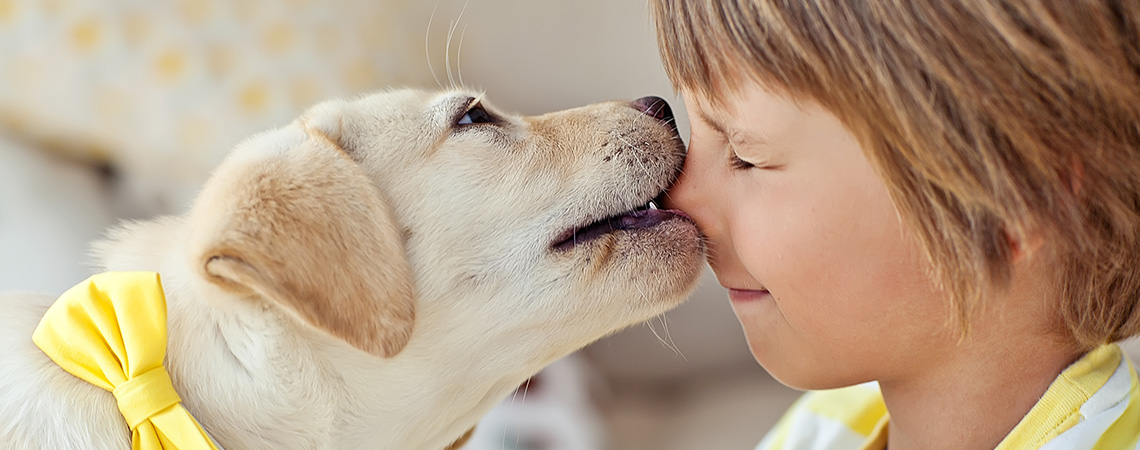Dogs and Children
“Dogs behave as though they expect us to read their expressions accurately. When we don’t … both dogs and humans can get in a lot of trouble.” -McConnell, Patricia. For the Love of a Dog: Understanding Emotion in You and Your Best Friend. Ballatine Books, 2009.
The key to successful child-dog relationships is in communication and careful management.
Dogs provide us cues about how they feel. Don’t wait for obvious cues, like trembling, growling, or biting, to intervene in child-dog interactions. More subtle signs your dog may be stressed are panting, yawning, tongue flicks, ears not in their natural position, wide eyes, avoiding eye contact, tail tucked, or tail tilted to one side. If they are up and moving around, they may sniff a lot, drink more water, mark/urinate, mount, or seem distracted. One major word of caution… you should not correct your dog for growling. It is a warning sign for a bite, and if you take that away, they are more likely to bite with no warning. Instead, manage the cause of the aggression.
I have observed certain practices in my home that I believe created a loving and respectful relationship between my nine-year-old dog and my three-year-old daughter. While I am not an animal behaviorist or dog trainer, my years of working with dogs have given me a lot of insight into how dogs communicate their emotions, and how to successfully respond to the messages they are sending. My personal belief is that it is not enough that our pets tolerate their relationship with children, but that they have the same excitement and bond with them that they do with us.
Try using these phrases:
- What is Buddy’s body doing?
- When Buddy’s body does ___, it means he feels stressed/scared/tired.
- Isn’t it fun to watch Buddy do ____ It means he is happy/relaxed/excited.
- How do you think Buddy feels when you do ___?
- You may play with Buddy when he invites you.
- If you are upset/angry/scared, ask a grown up for help with Buddy.
- When you are calm, Buddy feels calm. When you are excited, Buddy feels excited. He looks up to you.
-
Here are some other ideas for creating a respectful and loving child/dog relationship:
- Allow your children to participate in caregiving routines as soon as they show interest.
- When petting your dog, ask them to pretend their hand is a pancake.
- Massage your child’s arms, legs, or head with your fingers, then ask them to give your dog a massage the same way.
- Practice body parts by only allowing them to touch or pet the spot you say. “Show me Buddy’s ear, shoulder, foot,” …etc.
- Dogs and children should have safe spaces and breaks from one another.
- If your dog is experiencing sickness, pain, or outside stress, they may act differently.

